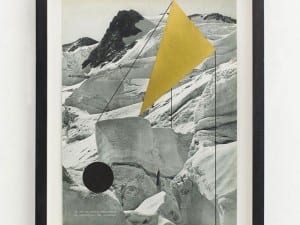The focus of the exhibition Dance Machines – From Léger to Kraftwerk opening on 22 January at Moderna Museet lies in the modernist fascination with machines and mechanised life, and how the band Kraftwerk has explored the relationship between man and machine in various multidisciplinary projects.
From the beginning of last century industrialisation and mechanisation has heavily influenced everyday life and culture. International artists responded to new technological developments; Filippo Tommaso Marinetti launched the movement of Italian Futurism that used machinery as its aesthetic ideal. Similarly, Paris become a hub for the European avant-guarde, accommodating the artists Fernand Léger (1881-1955) and Sonia Delaunay-Terk (1885-1979), and the poets Blaise Cendrars (1887-1961) and Guillaume Apollinaire (1880-1918) who were among the first to use modernity – and the modern city – as their subject matter. Artists during this time drew upon film, choreography and dance to reflect their growing interest in urbanism, while theatres also played host to an array of aesthetic experiments. The dance company of Rolf de Maré (1888-1964), Ballets Suédois, and Sergei Diaghilev’s (1872-1929) Ballets Russes appealed to the most innovative artists and produced revolutionary performances to aggressively modern music.
The machine become a modernist icon in the face of academic traditionalism, as a new realism was sought based on principles of organisation, structure and rhythm. Nameless engineers were hailed as artists, and experiences from the First World War gave rise to ideas of the body acting as a soulless series of mechanisms. Human bodies were recreated in collage and paintings based on instruction manuals as fragmented components by Francis Picabia (1879-1953), Marcel Duchamp (1887-1968) and Gösta Adrian-Nilsson (1884-1965).
Since 1970, Kraftwerk founders Ralf Hütter and Florian Schneider have been creating futuristic electro music at their Kling Klang Studio in Düsseldorf, using synthetic sounds and voices, and minimalist singing with monotonous industrial rhythms.
“Where the early avant-garde wanted to create a new art for a rapidly changing new society, Kraftwerk produced the soundtrack for the 21st century and our digitalised contemporary world,” says curator Jo Widoff.
Dance Machines – From Léger to Kraftwerk includes paintings, photography, drawings and video from 1911 to 1934, along with exclusive photogravures from 1887 by Eadweard Muybridge (1830-1904). Dance Machines also features works by artists such as Giacomo Balla (1871-1958), Aleksandra Ekster, Viking Eggeling (1880-1925), Fernand Léger and Francis Picabia. The exhibition presents around 50 works from the Moderna Museet Collection together with formative works on loan from other institutions, including Dansmuseet in Stockholm and Centre Pompidou in Paris.
Kraftwerk will give exclusive concerts at Cirkus in Stockholm from 21 until 23 January as an extension of the exhibition at Moderna Museet.
Dance Machines – From Léger to Kraftwerk. 22 January until 27 April, Moderna Museet, Exercisplan 4, 111 49 Stockholm, Sweden.
Image: Kraftwerk 3-D video installation – 1 2 3 4 5 6 7 8. Installation view Sprüth Magers Berlin, 2013 © Photo: Timo Ohler. Copyright Kraftwerk, 2013. Courtesy Sprüth Magers Berlin London.





